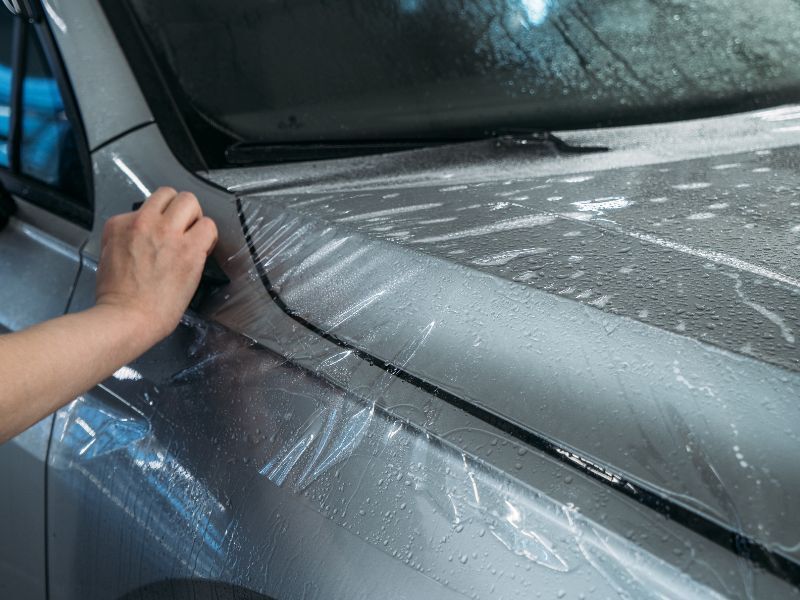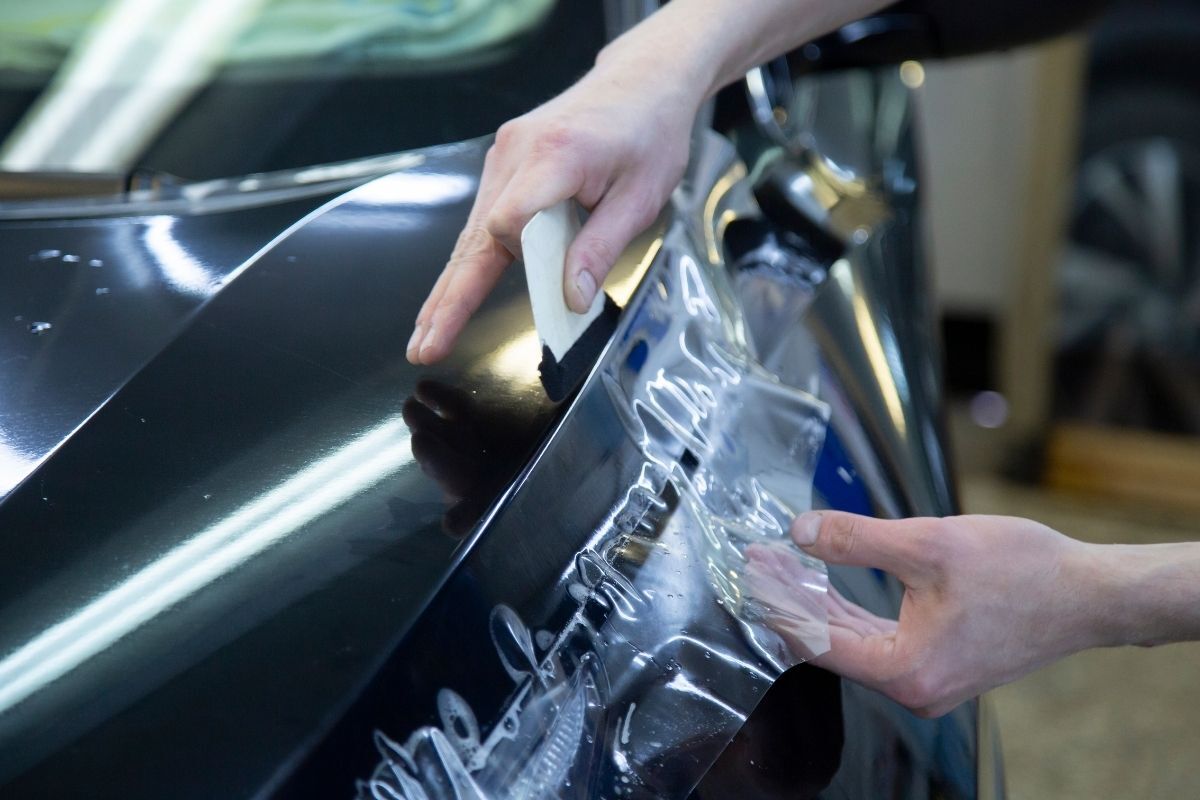Imagine driving a brand-new car off the lot, only to notice a rock chip on the front bumper days later. It’s a sinking feeling most vehicle owners know all too well. Even careful drivers can’t fully escape the wear and tear of daily roads, harsh weather, and unpredictable elements.
That’s where a clear car wrap, or paint protection film (PPF), makes a real difference. It shields your vehicle’s paint from chips, stains, and sun damage, without changing how your car looks.
In this guide, you’ll learn what clear wraps are made of, how they compare to vinyl wraps, the benefits and downsides, and how to maintain them long-term. Whether you're driving a daily saloon or a luxury sports car, this article will help you decide if PPF is the smart upgrade your paint deserves.

What Are Clear Wraps Made Of?
Clear car wraps, or paint protection films, are made from durable polyurethane or polymer-based materials. These films typically range between 6 and 10 mils in thickness: thin enough to be nearly invisible, yet strong enough to resist abrasions.
Many modern PPF products include self-healing properties, meaning that minor scratches and swirl marks fade away with heat exposure. This advanced tech is ideal for drivers who want long-lasting protection without the upkeep of repainting.
For example, a BMW M4 owner in Manchester used TeckWrap UK's self-healing PPF on their bonnet and bumper. After six months of regular motorway driving, the paint beneath remained flawless, and even light scratches on the film disappeared after sun exposure. According to industry forecasts, the UK PPF market is expected to exceed £359 million at the end of 2025.
Clear Wrap vs. Vinyl Wrap: What’s the Difference?
One of the most common questions we hear is: Should I get a clear wrap or a vinyl wrap?
Here’s how you can critically compare both:
|
Feature |
Paint Protection Film (PPF) |
Vinyl Wrap |
|
Primary Purpose |
Protect the paint from damage |
Change vehicle appearance |
|
Appearance |
Clear/invisible |
Custom colours & textures |
|
Durability |
5–10 years |
2–5 years |
|
Self-Healing |
Yes (on premium models) |
No |
|
Installation Complexity |
Requires a professional installer |
DIY-friendly |
|
Cost |
Higher |
Lower |
Pro Insight:
If your goal is paint protection, PPF is the superior choice. But if you’re after a bold style change, check out our gloss, matte, or chrome wraps instead.
Another Important Factor: Downsides of Clear Wraps
Like any product, PPF has its trade-offs. Here are a few potential drawbacks to keep in mind:
- Higher Upfront Cost: PPF is more expensive than vinyl. A full wrap may cost £1,200 to £2,500, depending on your vehicle.
- Professional Installation Recommended: To avoid bubbling and edge lifting, it’s best to work with experienced installers.
- Not Damage-Proof: PPF protects against minor scratches and chips, but it won’t prevent deep dents or heavy impact damage.
A customer in Leeds shared that after wrapping their Tesla Model 3 with PPF, they avoided multiple stone chips during a 3,000-mile road trip. The upfront cost was higher, but the safety and peace of mind were worth it.
How to Maintain Clear Wraps
Protecting your paint with a clear wrap is only half the story. Keeping it looking great takes some simple, consistent care.
Here’s what we recommend:
- Wash with pH-Neutral Soap: Avoid harsh chemicals or acidic cleaners.
- Use Microfiber Towels: Minimize scratching during drying.
- Avoid Pressure Washing Edges: Keep the nozzle at a distance to prevent peeling.
- Use PPF-Safe Waxes or Sealants: These preserve clarity without damaging the surface.
- Let the Film Self-Heal: If you notice light marks, pour warm water or park in the sun to activate healing properties.
Need more help? Visit our vinyl wrap shop for wrap-safe products and support.

Is Clear Wrap Worth It for Your Car?
If you’re still unsure whether PPF is right for you, consider these questions:
- Did you just buy a new or high-value car?
- Do you regularly drive long distances or on motorways?
- Are you leasing and want to avoid end-of-term damage fees?
If you answered yes to any of the above, PPF is likely a smart investment. You get long-term protection, peace of mind, and better resale value.
And you don’t have to wrap the whole car. Many customers opt for partial wraps on vulnerable areas: bonnets, bumpers, door sills, and wing mirrors.
Want to go further? Consider pairing PPF with a style upgrade using our structure vinyl wraps or carbon fiber accents.
Conclusion
A clear car wrap (PPF) does more than protect your paint, it protects your investment. With self-healing properties, invisible coverage, and long-term durability, it’s a go-to solution for drivers who want to keep their vehicle looking sharp without repainting.
Whether you’re protecting a weekend supercar or your daily runaround, PPF makes sense. And when applied by a pro and cared for properly, it can last years.
Ready to Get Started?
Browse TeckWrap’s premium selection of paint protection films and wraps today. Not sure what you need? Reach out to our expert team for personalised advice.
